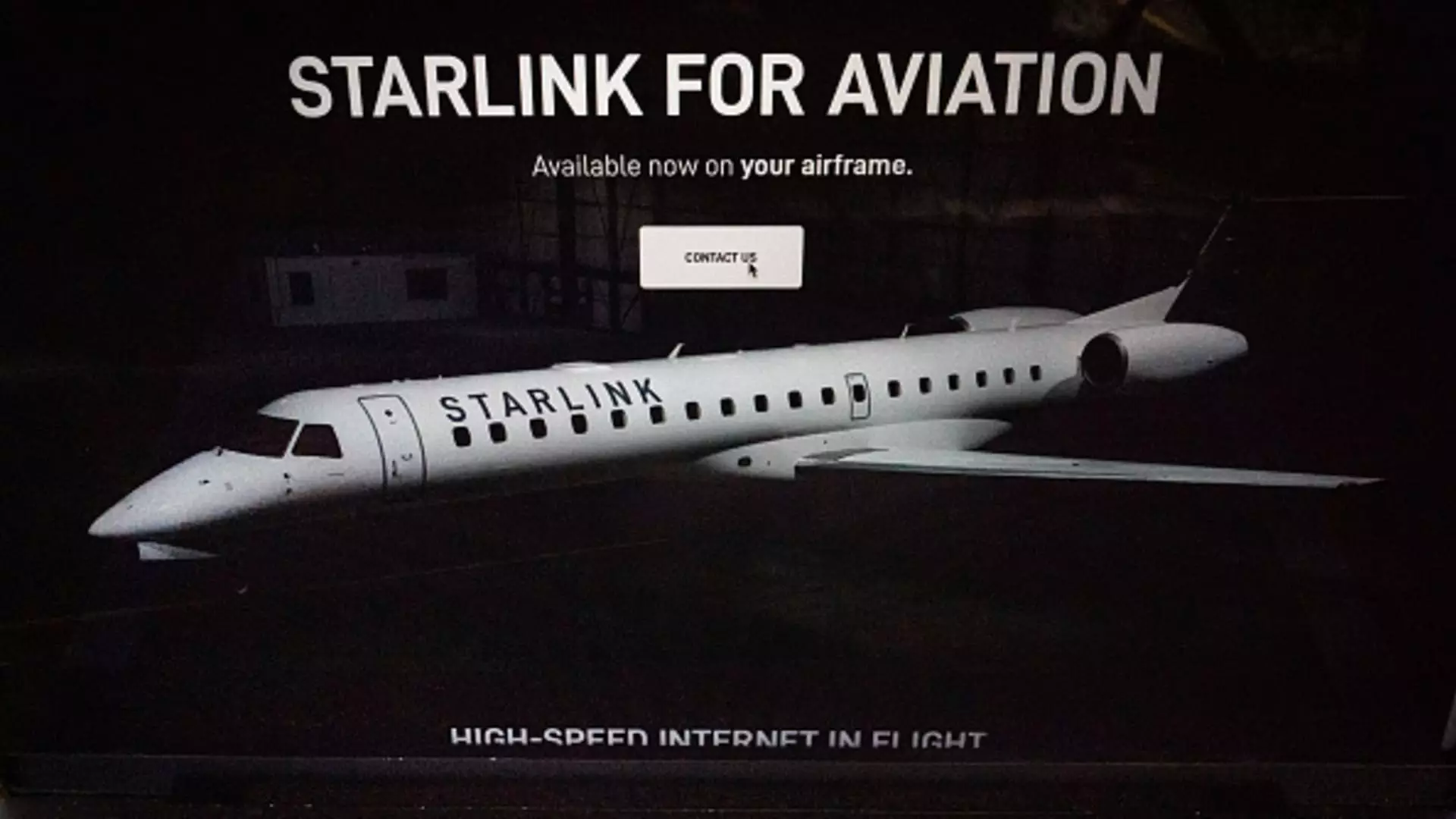In recent developments, SpaceX’s satellite internet service, Starlink, has significantly marked its territory in the aviation sector by forming an extensive partnership with United Airlines. This collaboration has led to a dramatic increase in Starlink’s aircraft connectivity orders, revealing the company’s ambition to redefine in-flight Wi-Fi services globally. The deal, which encompasses around 2,500 aircraft, signals a robust shift from a nascent startup to a formidable player in the in-flight connectivity (IFC) arena. Nick Galano, SpaceX’s director of Starlink aviation sales and partnerships, emphasized the enthusiasm surrounding this growth during a panel at the World Space Business Week conference held in Paris, indicating confidence in delivering an enriched travel experience for both passengers and airlines.
The partnership with United Airlines stands out as Starlink’s most significant IFC agreement to date. With plans to equip over 1,000 planes with the Starlink system at no cost to passengers, this move is poised to alter the dynamics of the in-flight connectivity market. Currently, United relies on a quartet of competitors, including Viasat, Panasonic, Thales, and Gogo, which will soon be phased out as Starlink is integrated. This strategic positioning not only enhances Starlink’s presence but also strengthens its competitive edge against established providers in the sector. As SpaceX ventures further into aviation connectivity, it has already initiated services with a range of airlines, such as Hawaiian Airlines, Qatar Airways, and airBaltic, demonstrating its ability to attract a diverse clientele.
One of the most compelling advantages Starlink offers is its sheer network capacity. According to Galano, the existing satellite constellation boasts over 300 terabits per second, which he claims is over 100 times the capacity of traditional systems. With approximately 6,400 Starlink satellites currently orbiting the Earth and serving over 3 million customers across 100 countries, the company’s infrastructure supports a rapidly evolving need for high-speed internet accessibility. This unprecedented capacity allows for seamless connectivity, a quintessential requirement for modern air travel.
A significant hurdle that airlines face in upgrading their in-flight connectivity systems is the retrofitting process, which traditionally requires bringing aircraft out of service for an extended period. SpaceX is actively working to streamline this process, aiming for installations to be completed in under a day. This presents a stark contrast to the average three-day retrofitting process cited by Delta Air Lines, which has a much larger fleet requiring updates. The fact that companies like Hawaiian Airlines and JSX have successfully undergone rapid installations showcases the potential for increased efficiency within the aviation sector as Starlink enhances its service offerings.
As airlines seek to attract high-end customers, the battle for passengers’ loyalty intensifies. Delta Airlines has recently implemented free Wi-Fi for members of its frequent flyer program, claiming a significant increase in SkyMiles membership as a direct result. This competition is emblematic of a broader trend in which airlines are investing heavily in enhancing the passenger experience through improved in-flight internet services. As the landscape evolves, the partnership with Starlink positions United Airlines advantageously to compete not only with Delta but also with a host of other carriers scrambling to secure customer loyalty through superior connectivity options.
Conclusion: A New Era of In-Flight Connectivity
SpaceX’s Starlink represents a definitive shift in the development and implementation of in-flight connectivity solutions. With its burgeoning partnerships, unparalleled capacity, and commitment to innovation in installation processes, Starlink is well-positioned to reshape airline experiences for passengers worldwide. The combination of high-speed internet access and the competitive dynamics among airlines underscores the potential for Starlink to disrupt a long-standing industry. As SpaceX continues to expand its offerings and refine its technologies, the era of in-flight connectivity is poised for transformation—a development that will surely enhance and redefine air travel for years to come.


Leave a Reply